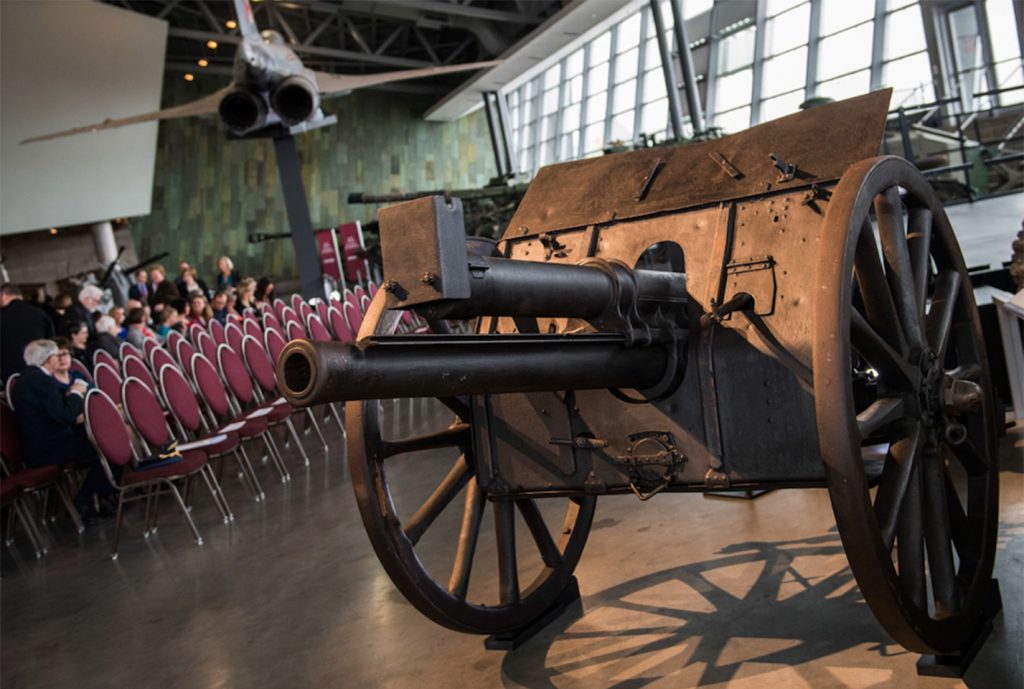Canadian cannon comes home
By Casey Bolton
The sound of gunfire stopped and silence swept across the Western Front on Nov. 11, 1918. The war that had claimed some 60,000 Canadian lives had finally come to an end.
In the small coal mining town of Mons, Belgium, one Canadian battalion kept its 18-pounder field gun ringing until the Armistice took effect, liberating the city. The cannon fired one of the last Canadian shells of the First World War.
A century later, that cannon has finally come home.
“It’s a powerful artifact from 100 years ago,” said Tim Cook, the bestselling author and leading First World War historian at the Canadian War Museum.
The cannon was uncrated in a ceremony at the LeBreton Flats museum on March 13, during a visit by Belgium’s King Philippe and Queen Mathilde — part of the first Canadian tour by a royal couple from Belgium in 40 years.
As they solemnly took the stage, King Philippe expressed his gratitude to Canada for its role in liberating Belgium in both the First and Second World War.
“The destinies of our two countries were tragically interwoven in the 20th century during two world wars,” he stated. “You have preserved here the moving testimonies left behind by the Canadian soldiers who twice came to fight, for too many of them to give their lives on Belgian soil.”
The cannon was delivered to the museum in January as part of this year’s commemorations marking the 100th anniversary of the end of the First World War.
“The story of the Mons cannon returning to Canada is a wonderful testimony of the enduring friendship uniting Belgium and Canada — a friendship sealed during Canada’s World War I sacrifice for the liberation of Belgium,” said Vincent Charron, a counsellor at the Canadian embassy in Belgium.
The Canadian cannon was gifted, along with a number of other artillery pieces, to the Mons people on Aug. 15, 1919 as a symbol of friendship between the two countries.
The cannon will be featured later this year in an exhibit detailing the “Hundred Days” push between August and November 1918 that ultimately won the war.
“The Hundred Days push are key battles where the Canadians really contributed,” said Cook, who has written 10 books about the First World War. “It is a very powerful story of courage, bravery, sacrifice and sorrow.”
The exhibit, which opens in October, will include colour photographs, letters, diaries and memoirs of Canadians who served in Belgium, as well as archival footage from combat cameramen.
According to the Patrick Deboeck, deputy head of the Belgian Embassy, the people of Belgium will never forget the sacrifice of the Canadian soldiers.
Belgium will be holding a national remembrance ceremony on Nov. 11 to mark 100 years since the signing of the Armistice.
“We hope that the Canadian government at the highest level will be represented at the commemoration in Belgium, to represent the friendship we’ve had in both the wars,” said Deboeck. “It is the basis of the cooperation we have now as well as our common values.”

